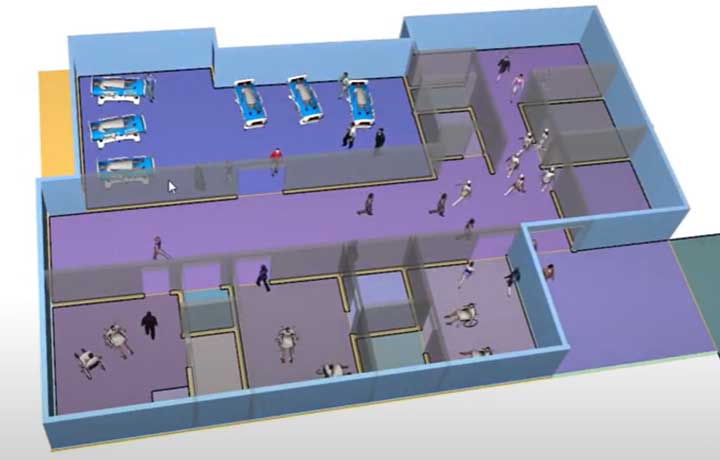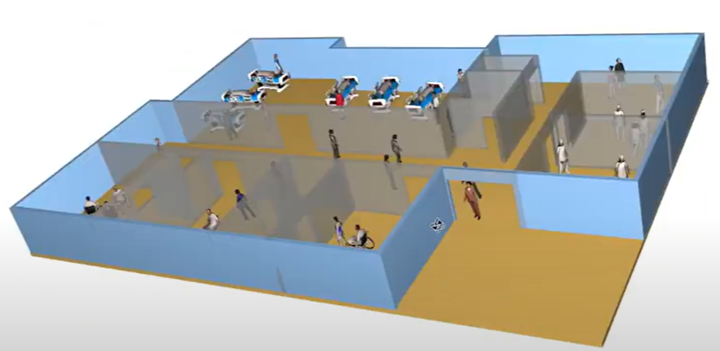
At LAVA Consultants, we provide expert evacuation simulations tailored to the unique operational and architectural features of hospitals. Our models help designers, facility managers, and safety consultants identify evacuation risks, evaluate egress performance, and develop response strategies that prioritise both life safety and continuity of care.
Evacuating a hospital is not just about moving people to an exit. It involves the safe relocation of:
These factors introduce additional layers of complexity such as delayed movement, dependence on staff assistance, and the need for phased or horizontal evacuation before vertical egress can be achieved. Simulation-based planning is essential to accurately reflect these constraints and ensure the hospital’s fire and life safety strategy is both feasible and compliant.

To model evacuation in healthcare settings, we use Pathfinder, an agent-based simulation tool that allows for customisation of occupant behaviour, mobility profiles, and route selection. In a typical hospital evacuation model, we define various occupant types:
Pathfinder supports both vertical evacuation (e.g., using staircases, ramps, or lifts where permitted) and horizontal evacuation, a preferred strategy in hospitals where patients are moved to adjacent smoke compartments or fire zones.
In hospital evacuations, pre-movement time is often longer than in other occupancies. This includes:
Evacuation speeds in hospitals vary greatly depending on occupant condition:
Pathfinder enables detailed control over these profiles, ensuring the simulation reflects true evacuation capacity and staffing requirements.
Hospital evacuations are typically staged, with horizontal movement into protected compartments before vertical evacuation to final exits. Our models assess the use of:
Simulations also evaluate congestion points, exit width sufficiency, and flow rates to ensure patients and staff can move efficiently within the expected evacuation timeframes.
Our hospital evacuation simulations provide critical performance metrics, including:
These outputs support fire strategy development, emergency planning, and authority approvals.
© 2025 Lava Consultants. All rights reserved